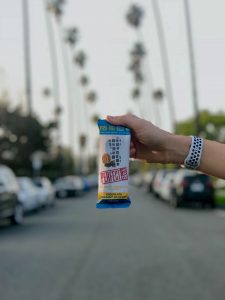 I know that I’m constantly focused on eating whole foods and avoiding prepacked, highly processed ones, but there are some exceptions. Salads premade in the grocery may be healthy, just as prepackaged sports bars can be good or bad. How do you tell the difference? One way is to read the labels. Everyone is rushed for time, so finding a pre-workout or post workout snack that’s quick can be a big benefit. Here are some ways to identify healthy and unhealthy ones.
I know that I’m constantly focused on eating whole foods and avoiding prepacked, highly processed ones, but there are some exceptions. Salads premade in the grocery may be healthy, just as prepackaged sports bars can be good or bad. How do you tell the difference? One way is to read the labels. Everyone is rushed for time, so finding a pre-workout or post workout snack that’s quick can be a big benefit. Here are some ways to identify healthy and unhealthy ones.
Read the ingredients and check for added sugar.
You may find several different names for sugar, which range from corn syrup, maltose, to glucose, fructose and dextrose, just to name a few. Learn the variety of names for sugar and when you find more than one on a label, you know they’re trying to hide the sugar content, by breaking it up to several types, so all are lower on the ingredients label and it doesn’t look as bad.
Identify unhealthy fat and poor protein sources.
If the protein bar lists partially hydrogenated palm kernel oil, and any other partially hydrogenated oils it is probably a source of trans fats. Always check the label to see if it has any trans fats. The government recently required the labels show how much, but if the amount is under 0.5 grams per serving, the company can show 0 grams. Again, check to see how many servings per sports bar. If it’s more than one serving, they may be hiding something.
Look for sports bars with few ingredients and ones you can recognize.
So many of the “healthy” protein bars have a list of ingredients an arm long, many of which you can’t pronounce. Opt for ones where the ingredients are recognized, like organic flax seed, organic dates or organic oats. The healthiest ones have whole foods with the sweetness coming from dried fruit. You’ll recognize them immediately when you can visualize every ingredient. Most don’t contain added protein in the form of casein, which can cause stomach upset, but get the protein from nuts, seeds or collagen from grass-fed animal sources.
- Some of the healthiest sports bars or energy bars may also be more expensive. It’s worth the investment. Often the cheaper options are more like eating a candy bar after a workout or a run.
- The sports bar is used for refueling, not for a complete meal. The ratio of carbs to protein should be approximately 4 to 1. Don’t go for energy bars that are high in fiber and fat, as they can affect your digestion and cause GI problems if you eat them before a tough workout.
- Avoid all sports bars that contain artificial sweetener. They may be lower in calories, but there are several studies that show they aren’t healthy and can actually cause you to gain weight around your middle, while messing with your metabolism.
- Companies often make several types of sports bars, some are healthier than others. Just because one bar in their line is super healthy, it doesn’t mean all of them are. Read the labels for each bar.
For more information, contact us today at One Love Fit Club
 13609 Central Ave, Ste E Chino, CA 91710
13609 Central Ave, Ste E Chino, CA 91710
